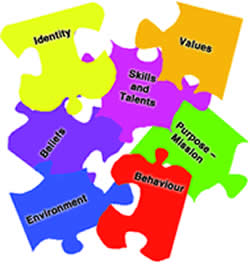Positive Health Online
Your Country

Unravelling Superhumans Thinking Strategies
listed in mind matters, originally published in issue 202 - January 2013
I watched a TV programme called Superhumans where finalists were challenged to demonstrate their most fantastic capabilities to become proclaimed superhuman. One finalist could tell which day of the week any date given to him fell on, in any period over the last 500 years. He was able to correctly give the correct answers to 100 random dates in under two minutes. The winner of Superhumans was able to solve ten rubix cube puzzles in two minutes. These were truly superhuman feats. It was calculated that only one in seven billion people was ever likely to have these capabilities.

Both Superhumans were running internal sequencing strategies, which neuroscientists were able to unravel by questioning, and watching which part of the competitors’ brains lit up when they were performing the actions whilst undergoing MRI scans. Number two who gave days of the week from dates, was running an algorhythm . The superhuman winner who solved rubix cube puzzles did so by colour pattern recognition, and converting the colours into letters, then stringing letters together to make word combinations he memorised. These people really are superhuman!
Many of the people we hail as genius are simply clever people who have developed strategies for doing things incredibly well. Human beings have limited brainpower; there is only so much we can remember and learn. But we have abilities for pattern recognition and to invent tools, devices and strategies that expand our capabilities.
Mind Maps
Tony Buzan devised the idea of mind maps, a colourful visual form of note-taking that lets people capture and explore aspects of their thinking that might otherwise escape if they use conventional linear note-taking. The maps contain a central idea or image and themes are explored by following branches that radiate from it.
The technique is a cleverly simple artefact that expands the range of things that people can do. Mapping is useful for brainstorming for new ideas and topics can then be explored by following the branches that connect to a central theme.
Walt Disney’s Strategy
Another technique was developed by Walt Disney, hailed as a genius for his breathtaking Disney film cartoons such as Fantasia, Bambi, and Sleeping Beauty. Disney used strategies to take his teams through creative processes, such as developing storylines, to make sure dialogue and animation fitted perfectly.
Disney’s Dreamer, Realist and Critic strategy can be used by anyone to improve the quality of ideas they generate, articles they write, books they structure, and concepts or products they are planning to launch.
Use Walt Disney’s Creativity Strategy
The Dreamer Stage
When you are brainstorming for new ideas, act as if you are the most knowledgeable person in the world. Disney had different rooms for different types of thinking, and during the Dreamer stage, designed to convey a starburst of ideas; no one was allowed to criticize anyone’s input.
The Realist Stage
At this stage people work out what is possible - the theme, form and structure - and flesh out the outline. This is the practical stage from which the first draft emerges.
The Critic Stage
When the Realist stage is finished the inner Critic steps in. At this point you become the most critical person in the world and look to find the flaws in your creation. Next time you are planning something important, try it and see if this strategy improves your outcome.
Use the Strategy
I use this technique for feature writing and brainstorm for ideas at the kitchen table. There is a whiteboard on the wall so I can capture good ideas. For the Realist stage I move on to the computer and input, structure and comb through my work to get it into shape.
At the final Critic stage I stand at the polished kitchen worktop and read my copy aloud as if I am another more critical person. At this stage, I can hear my ‘inner’ editor commenting and telling me what changes to make. Then it’s back to the computer to hone the feature and send it off.
I am hoping to run a strategy elicitation day at the City Lit in London in the future, or somewhere else which is central. If you would like more details you can e-mail me on admin@francescoombes.com My latest book is Teach Yourself Self-Motivation www.francescoombes.com
Comments:
-
No Article Comments available